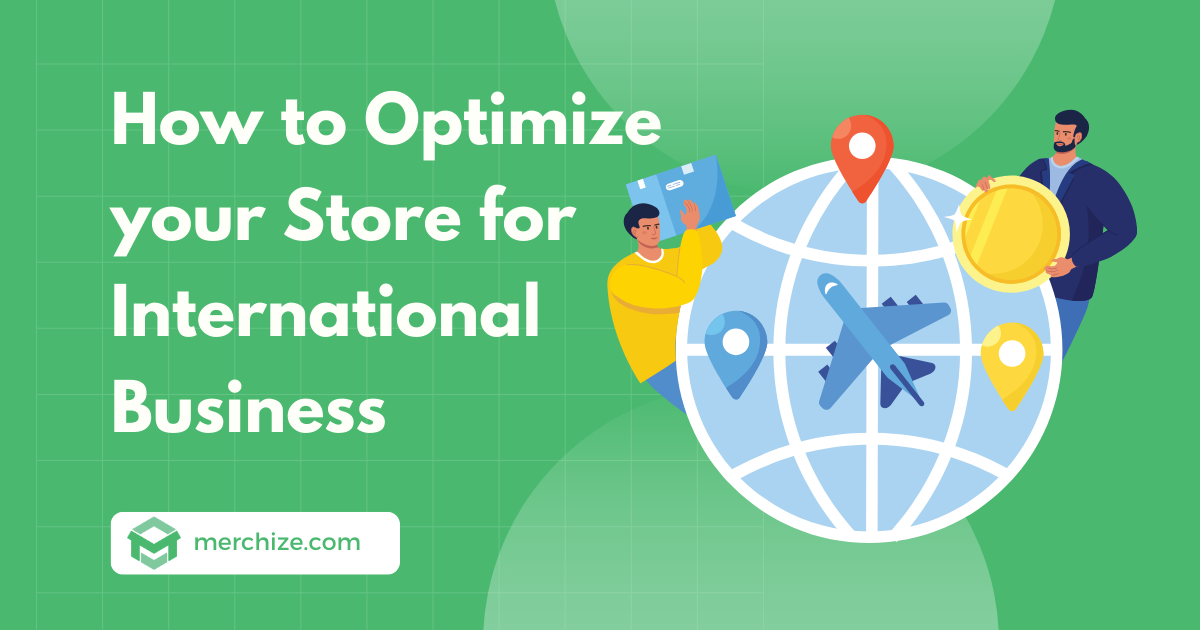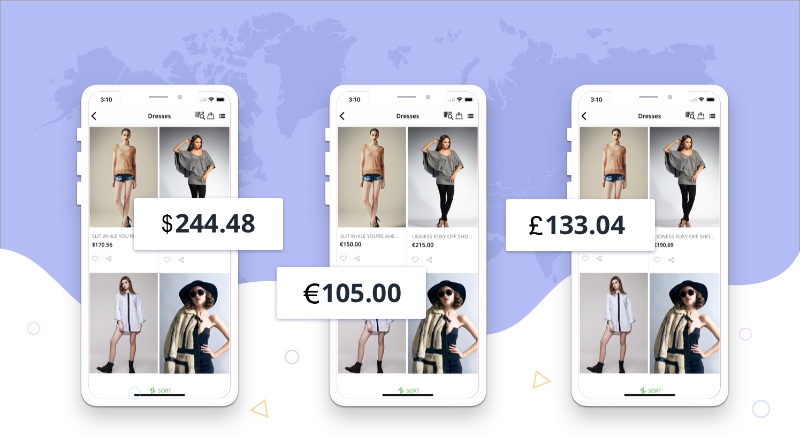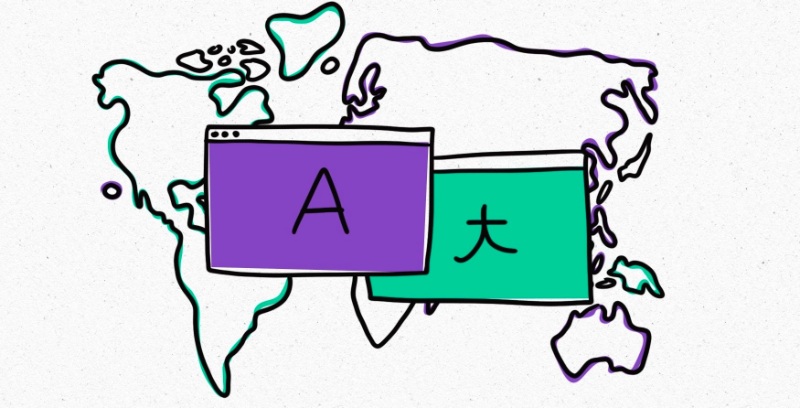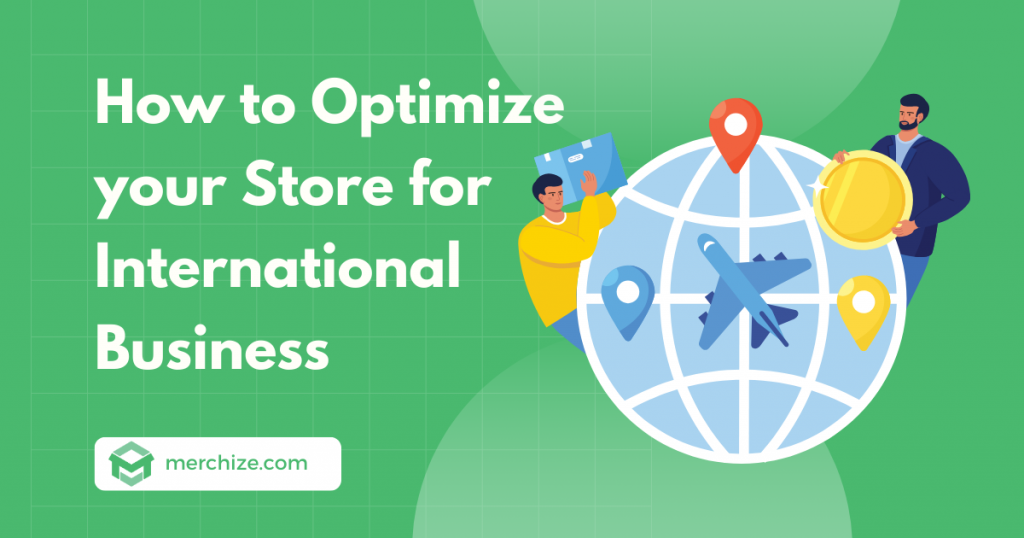Contents
- 1. Convert price into local currency
- 2. Translate your store into local languages
- 3. Customize your store designs and content for different countries
- 4. Show estimated shipping information to a specific religion
- 5. Tailor product offers and pricing for different countries
- 6. Offer diverse payment options
- 7. Optimize your SEO for different locations
Going global is one of the best ways for companies to earn more sales, extend their market, as well as grow their business in the long run. On the way to creating a multi-national business empire, it is important to build your own space in the internet world, where your customers can reach and buy your products. It remains a big challenge for most businesses to create one single store to serve customers from different countries who speak different languages and have different behavior patterns.
In this post, we will give you some practical tips on e-commerce localization or how to optimize your store for different markets.
1. Convert price into local currency
This is one of the simple and straightforward ways to tell your customers “Hey, I sell products to your country too”. You can easily convert the prices of your products into the currency of the country where your customers are browsing your store from.
Nearly 80% percent of customers prefer to shop at a website using the local currency.
Here’s how adopting local currency can help elevate customer experience and improve your conversion rate:
- Keep the customers on your website and save them time
As the products are shown in local currency, visitors to your website won’t have to visit another site to calculate the prices or carry the mental load of doing the math to know how much a product costs.
This way, you can remove small inconveniences, smooth out the buying process, and encourage customers to buy your products.
- Quickly communicate to your customers that the products are available in their country: When seeing the price in the local currency, customers will understand that these products are ready to sell in their country, at just one glance.
- Increase trust for your store: A simple action like this is a sure way to show your commitment and readiness to serve customers from that country. Localization, starting with showing the price in local currency, will help to clear out any confusion and doubt when customers first visit your online store.
Tips:
Depending on the platforms that you are using for your store, you can find various plugs-in and apps that help to quickly convert your prices into different currencies:
- Shopify: Currency Converter Plus, Language Translate & Currency, Currency Converter & Switcher, Multi-Currency Converter Hero, Currency Converter Bear, etc.
- Woocommerce: Currency Switcher, Woocommerce Multi-currency, Currency Converter Widget, Price Base on Country, etc.
2. Translate your store into local languages
Besides the currency, language is also an important barrier that might prevent your customers from making the purchase.
According to “Can’t read, Won’t buy” report, 53% of the consumers said that reading product descriptions in their native language is more important than prices.
Similar to the benefits of using local currency, having your website content, product descriptions, and customer support guide translated into the customer’s language will help them to save their time, increase your credibility, and signify that your products are available for sale in their country.
That’s not all. Translating your website can be an impactful and comprehensive solution for your e-commerce business:
- Convince customers to buy your products: With translated materials, customers will be able to thoroughly understand your products’ features and benefits and how they can solve your problems.
- Improve search engine visibility: Translated content is a signal to tell Google’s search engine that your website is providing relevant information for customers using that language. And in return, they will show up on your website when the customers enter a query in that language. It will help you to reach your target audience and expand your visibility in the online space.
Tips:
It is best to have a refined translation in a different language. However, it could be a daunting task to manually translate everything on your website into a foreign language (and can cost you a huge amount of money as well).
To make it more convenient and time-saving, you can easily get through with the help of automatic translation tools.
Automatic translation might sound sloppy. But it is still better than nothing at all. It is also revealed in “Can’t Read, Won’t Buy” report that 65% of the customers prefer content in their language, even if it is poor quality.
Here are some recommended plug-ins and apps that can automatically render your website content into different languages:
- Woocommerce: WPML, TranslatePress, Weglot, GTranslate, Polylang, etc.
- Shopify: langify, Transcy, T Lab, Weglot, ETranslate, etc.
3. Customize your store designs and content for different countries
This is another suggestion to elevate your cross-border e-commerce store. Beyond the essential factors like currency and language, the design is also a way to communicate with your customers from different countries.
While visual elements like colors and images are considered the universal language that everyone across the globe can understand, there is still room for improvement if you want to create a specifically customized experience for customers from specific regions. Here are some suggestions to customize your website’s interface for different countries:
- For a starter, you can use images, graphics, icons, or even text related to that country. For example, you can change your website banner with images that show the little flags representing the country.
- To take it to the next level, you can even customize your visuals and content for special occasions and holidays in the country. This extra effort is a great way to show your understanding of their culture as well as your commitment to a specific market. It will help your brand connect with local customers.
Tips:
If you are using Shopify, you can follow this guideline provided by Shopify on how to customize content by country.
Following this guideline, you will be able to:
- Show different versions of the homepage banner to different countries
- Display or hide certain products on collection pages
- Switch to different versions of product pages based on country
4. Show estimated shipping information to a specific religion
Online customers would want to know whether or not the products are available to be shipped to their locations, how long it will take for them to receive the packages, as well as how much the shipping costs.
Depending on the location, details like shipping cost, delivery times, and shipping methods can vary widely. It is important to customize your store to show accurate shipping costs and delivery time based on the customer’s location.
Not only does it help to highlight the fact that your products are available for shipping to customers in the country but also shows your transparency and increases your business’s credibility.
Tips:
In order to truly satisfy local customers and increase your conversion rate, you should go above and beyond showing your shipping information. Try to optimize and cut down the delivery time as well as the shipping cost as much as possible!
5. Tailor product offers and pricing for different countries
To fully localize your stores for specific markets, you can tailor your products and services to adapt to the preferences of local customers.
Take Netflix for example. This streaming platform’s major strategy for localization is to diversify its content to cater to different regions. US subscribers will get different content than subscribers from Japan. And, of course, there will be more anime content for people in Japan.
Another example is Brewdog. This brewing company is currently among UK’s the fastest-growing companies and registers an impressive annual growth rate of 167%. Not only in the UK but this brand has also successfully penetrated into other markets.
One of their strategy for cross-border expansion is to offer curtailed offerings for different countries. In England, they offer more bundle options, especially in smaller quantities, like 4 and 12 cans. But in Germany, a country with a bigger beer culture, they offer fewer bundle options and focus on larger bundles like 24 and 48 cans.
Besides creating market-specific product offers, to make your products suitable and more appealing for a specific market, you can also adjust the price to a reasonable amount.
Tips:
Creating product offers that are suitable for a specific country requires in-depth research and a deep understanding of the market.
To provide the right products to each market, you can:
- Hide products that are not available to ship to that country
- Assess your competitor’s prices and adjust your pricing accordingly
- Do research on local customer’s behavior and shopping preferences for your products
6. Offer diverse payment options
One of the main reasons that prevent customers from buying products from other countries is the payment process.
Even when you have checked everything listed above and successfully convinced customers to make it to the checkout stage, customers might still abandon the carts if they can’t find a suitable payment option.
That’s why is highly important to diversify your payment options if you want to expand your business across different countries.
Tips:
Currently, credit/debit cards and digital wallets remain the most popular payment options for people across different regions. Make sure that you can cover these two options for each market that you are targeting.
Also note that In each country, people will have different preferred payment methods.
For example, with digital wallets, each country or region might favor different types of e-wallets. In North America, Europe, and Australia, PayPal is the most popular option, while in Latin American countries, PicPay or NUbank are the most preferred e-wallets. If you are expanding your business across different countries, it is recommended to offer a mix of popular payment options from each country.
7. Optimize your SEO for different locations
Besides creating a smooth and seamless experience on the website, you should also optimize your stores for better visibility in search result pages. When your website is able to rank for local keywords, you will be able to attract local customers through search results, increase the traffic to your website, and introduce your services and products to more and more customers.
Tips:
Showing local currency or translating website content is also good for local SEO. Other than that, you can do the following practices to improve your website’s visibility on search engine result pages.
- Hreflang tags: hreflang tags are used to tell search engines which version of your content should be shown to users, depending on their locations and language preferences. Implementing hreflang will help you to deliver the right content to your audience in different countries.
- Country-targeted domain or subdomain: Using country-targeted domains or subdomains is also a popular practice that many international businesses are using. For example, besides the main market, if you also want to expand your business to other countries like France or Spain, you can create a specific subdomain for each market, for example, fr.yourdomain.com or es.yourdomain.com.
- Market-specific content: Besides translating general content on your website, you can also create specific content tailored to audiences in different markets. By doing keyword research, you can pick out some local keywords with high volume and low competition and build your content around these keywords. This content can be written in the format of blog posts or landing pages, depending on the search intent.








